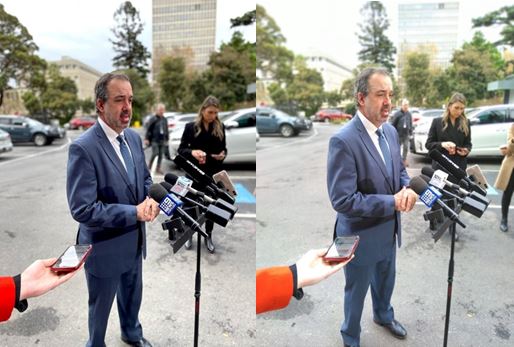TCL is a brand synonymous with televisions, not smartphones.
That started changing in 2019 with the release of the TCL Plex, an attempt to crack the affordable smartphone market that the Chinese tech giant is dialling to 11 in 2021.
TCL has unleashed three phones in Australia over the past month: the TCL 20 5G ($499), TCL 20L+ ($399) and TCL 20 SE ($299).
LIVE UPDATES: All the latest breaking news on Melbourne's coronavirus lockdown

At less than $500 a piece, it's an assault that shouldn't be ignored by those unwilling or unable to spend thousands on the latest iPhone.
For the past few weeks, I've been testing the $299 TCL 20 SE.
Out of the box, a lack of 5G hurts those chasing the cutting edge but Android 11 is a big win.
Perception is critical and TCL has two weapons in its arsenal: cameras and screens.
As you'd expect, the 6.82-inch display is big, bright and clear.
Pixel density on the FHD+ display could be improved - small circles aren't as crisp as you may expect - but it's hardly a dealbreaker.
TCL is pushing "NXTVISION" on the 20 SE.
It's a visual AI that improves the clarity and brightness of the display based on what the phone is doing like viewing photos or videos.
It's hard to say how much of an improvement the AI offers without direct comparisons, but the idea of an SDR-to-HDR upgrade is enticing.
Compared to an iPhone 12 though, TCL's screen does not get as bright or look as clear.
Numbers on spec sheets aren't a guarantee of quality in 2021, given how much software plays a part.
On paper, TCL's cameras outgun the iPhone 12's.
Its 48 megapixels sound four times better than the 12 megapixels on the latest iPhone, but take a look at these two portrait shots.

REVIEW: Putting Apple's new AirTags to the test
The difference is obvious in clarity, colour and AI-driven depth.
At roughly two metres from my subject, TCL's main camera struggles in differentiating between the edges of the minister's head and the background, blurring what should be sharp and in focus.
AI-driven portrait modes are the Achilles heel of cheaper phones and generally speaking, TCL's 20 SE takes far better photos than you might expect for a $299 handset.
The 48 megapixels often make up for software deficiencies in broad daylight.
Even in darker settings, the camera manages to take decent shots, but like many small lenses it struggles with finer details in dark places.
I must mention one bizarre feature: TCL's 20 SE vibrates when you zoom and I have no idea why.
There's nothing mechanical about it, it's a purely digital zoom.
Yet they've added a vibration to create a sound akin to an old video camera zooming in.
It's completely unnecessary and a little annoying as you're trying to crop a shot.

Review: The newly redesigned Suunto 7 Titanium
The 13MP selfie camera does a great job - even in low light - and does a great job with defining a face but again, battles with defining the edge of hair and clothing.
Swapping between the cameras is surprisingly quick for a $299 device.
Performance, in general, has been impressive during my testing once the phone is up and running, albeit it's slow to turn on from a cold start.
You won't be disappointed in general use.
Face unlock and fingerprint unlock work quickly and easily, in part thanks to a dedicated fingerprint scanner on the back of the 20 SE.
Despite its plastic edging, the device itself feels great in hand.
As always, I appreciate a dedicated side button in addition to the power and volume rocker which brings up Google's assistant - by far my favourite virtual assistant - and it works as well as you'd expect.
Unbelievably, there's still a 3.5mm headphone jack on the 20 SE.
Better yet, headphones and a charger come in the box! You don't see that very often in 2021.
Finally, we come to the battery: 5000 milliamps is huge on paper, which is the same size as Samsung's S21 Ultra which uses a much more powerful chipset.
On a full charge, getting through a full day was easy, however, charging was a little slow (note: I wasn't able to use the device's own USB charger in my testing as my review unit came with an international adapter).
All in all, for $299 you're getting a pretty impressive phone.
It's by far the best $299 handset I've had a chance to review.
Source: https://ift.tt/3vBEl4S
Comments
Post a Comment